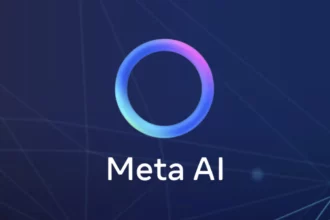Drawbacks and Limitations of Current LLMs
Ah, the enigma of Large Language Models (LLMs) and their future in the realm of Artificial Intelligence (AI). It’s like picking a favorite flavor of ice cream – while some swear by vanilla, others go all in for rocky road. But when it comes to LLMs, are they really the top dog in the AI world or just another temporary fad?
Let’s dive into why relying solely on LLMs might not be the brightest idea for the future of AI. Picture this – you’ve got LLMs strutting their stuff, taking center stage in AI discussions and stealing the spotlight from other traditional AI methods like Gradient Boosting Machines (GBMs) and supervised learning. It’s like a new celebrity in town overshadowing the old-timers.
Now, while LLMs have their perks, there are some drawbacks to consider. Firstly, building and managing these beasts require hefty computational resources, potentially putting smaller players at a disadvantage. It’s like trying to win a chess game with only pawns against someone with an arsenal of queens and rooks.
Saviez-vous tip: The carbon footprint of running and maintaining LLMs is no joke. With all that processing power chugging away, it’s like having an energy-guzzling monster lurking in your backyard.
And here’s another plot twist – there’s a growing notion that LLMs hold the key to unlocking Artificial General Intelligence (AGI). But hold your horses! These models aren’t exactly on par with human brainpower. They lack emotional depth, struggle with nuances, and can’t grasp sarcasm if it hit them in the face. So maybe we shouldn’t put all our eggs in the LLM basket just yet.
So here’s the million-dollar question: Are we putting too many chips on one number? Maybe it’s time to diversify our AI portfolio and embrace a mix of models tailored to different needs. After all, variety is the spice of life, even in the world of AI. Ready to unravel more about why LLMs might not be leading us into an AI utopia? Keep reading for more juicy details!
Table of Contents
ToggleAlternative AI Technologies Shaping the Future
Artificial intelligence (AI) is like a blooming flower, promising to revolutionize various sectors, from healthcare to banking. However, one major hiccup holding back this technological marvel is its insatiable appetite for data. Unlike us humans who can learn from a mere handful of examples, AI systems hunger for thousands or even millions of data points just to wrap their circuits around simple tasks. It’s like asking AI to learn how to bake a cake with just one recipe – it needs a whole library of cookbooks! This dependency on vast datasets might be the Achilles’ heel in the race towards truly intelligent machines.
Talking about Large Language Models (LLMs), these bad boys in the AI realm have been stealing the limelight lately with their text-savvy abilities. Picture a chatty robot that can write essays, translate languages, and even help in healthcare – that’s the power of LLMs. But hold your horses! While they have their charms, relying solely on LLMs for future AI innovation might not be the wisest move. These models are like flashy sports cars; sure, they look impressive and alluring, but they come with hefty maintenance costs and limitations.
The future of Large Language Models seems bright and shiny on the surface – disrupting industries left and right, bridging information gaps in manufacturing, and acting as conversational bridge builders between humans and machines. However, beneath this glossy exterior lies a reality check: LLMs might not be the end-all-be-all of AI progress. The road ahead could be paved with challenges relating to scalability issues, limited capabilities in nuanced understanding, and hefty computational demands akin to keeping a power-hungry monster fed 24/7.
So what’s the takeaway from this AI fiesta? While LLMs are strutting their stuff on the catwalk of innovation now, it’s essential not to put all our eggs in this fancy model’s basket – diversifying our AI arsenal with tailored models for varied needs might just be the secret sauce for creating an AI utopia that’s both powerful and sustainable. After all, balance is key – like finding that sweet spot between too much icing on your cake or too little sugar in your coffee!
The Role of Traditional Approaches in Modern AI
The discourse surrounding AI development has been largely centered on Large Language Models (LLMs), indicative of the direction AI research is heading in. The growing focus on LLMs as foundational models in the AI realm has led to a shift away from traditional approaches such as Gradient Boosting Machines (GBMs) and supervised learning. This trend, while exciting, raises concerns about the overreliance on LLMs for future AI innovation.
One major worry within the AI community is the increasingly common belief that LLMs are the sole path to achieving Artificial General Intelligence (AGI). The almost reverential treatment of LLMs and their variants has even led to speculations about these models attaining sentience and agency. However, it’s crucial to understand that LLMs operate fundamentally differently from human intelligence. While LLMs excel at tasks like pattern recognition and statistical analysis, they lack true understanding, reasoning abilities, and cognitive depth comparable to human cognition.
Amidst this technological frenzy, some AI thinkers have delved into the philosophical implications of AI development. Institutions like OpenAI have employed AI philosophers to navigate the ethical considerations surrounding rapid advancements in AI technologies. Their insights, especially in alignment research aimed at harmonizing AI goals with human values, play a vital role in shaping responsible AI innovation.
As we navigate this rapidly evolving landscape of AI development dominated by LLMs’ prominence, it’s essential to maintain a balanced approach that embraces a diverse range of models catering to varied needs. While LLMs have their strengths in language-based tasks, traditional machine learning models continue to hold their ground in other domains due to their efficiency and effectiveness in discriminative tasks. Diversification remains key – just like not putting all your eggs in one fancy model’s basket!
Ethical and Regulatory Considerations Around LLMs
When it comes to the ethical and regulatory landscape surrounding Large Language Models (LLMs), transparency and accountability are two critical pillars shaping discussions. As LLMs venture into complex linguistic territories, understanding their inner workings becomes akin to navigating a maze. The issue of transparency emerges prominently – how can we trust decisions made by entities whose reasoning eludes us? The clamor for accountability amplifies, urging for clear pathways through the intricate decision-making processes of LLMs.
Developers, researchers, regulators, and governance bodies play pivotal roles in ensuring the responsible use of LLMs. Their focus must zoom in on scrutinizing LLM-based models for potential data breaches, conducting tests to thwart adversarial attacks, and creating benchmarks to strike a balance between privacy and utility. Moreover, they need to establish validation frameworks for comprehensive evaluation of multimodal LLMs while maintaining a tiered regulatory approach tailored to data sensitivity levels.
In the realm of data privacy and rights usage, highlighting data provenance is essential. Stakeholders should promote transparency by divulging details about training datasets such as sources, quality, and quantity. Moreover, conceptualizing new market structures coupled with proactive reviews can help safeguard against contamination of intellectual property.
Amidst these efforts lies a dire need for familiarizing users and consumers (like clinicians and patients) with data rights encompassing access rights, rectification rights, erasure rights, processing restriction rights,and more relating to LLM applications. However,it’s crucial not to turn a blind eye to the limitations of LLMs – from struggles with common sense reasoning and bias replicationto challenges in handling dynamic information or unethical misuse.LLMs may generate technically accurate but contextually inaccurate information leadingto ambiguity in responses.
Looking towards the future,Large Language Models are poised for continuous evolutionacross diverse domains.Soon we might see advancements focusing on benchmarking frameworks,risk-assessment methodologies,and heightened stewardshipstrategies.Ultimately,the journey ahead is as exciting as decoding a cryptic crossword puzzle – unraveling mysteries one algorithm at a time!
- Building and managing Large Language Models (LLMs) require hefty computational resources, potentially disadvantaging smaller players in the AI field.
- The carbon footprint of running and maintaining LLMs is significant, posing environmental concerns due to their high energy consumption.
- LLMs are not on par with human intelligence, lacking emotional depth, struggling with nuances, and unable to understand sarcasm effectively.
- Diversifying AI models beyond LLMs is crucial for the future of Artificial Intelligence, embracing a mix of technologies tailored to different needs for a more balanced approach.




